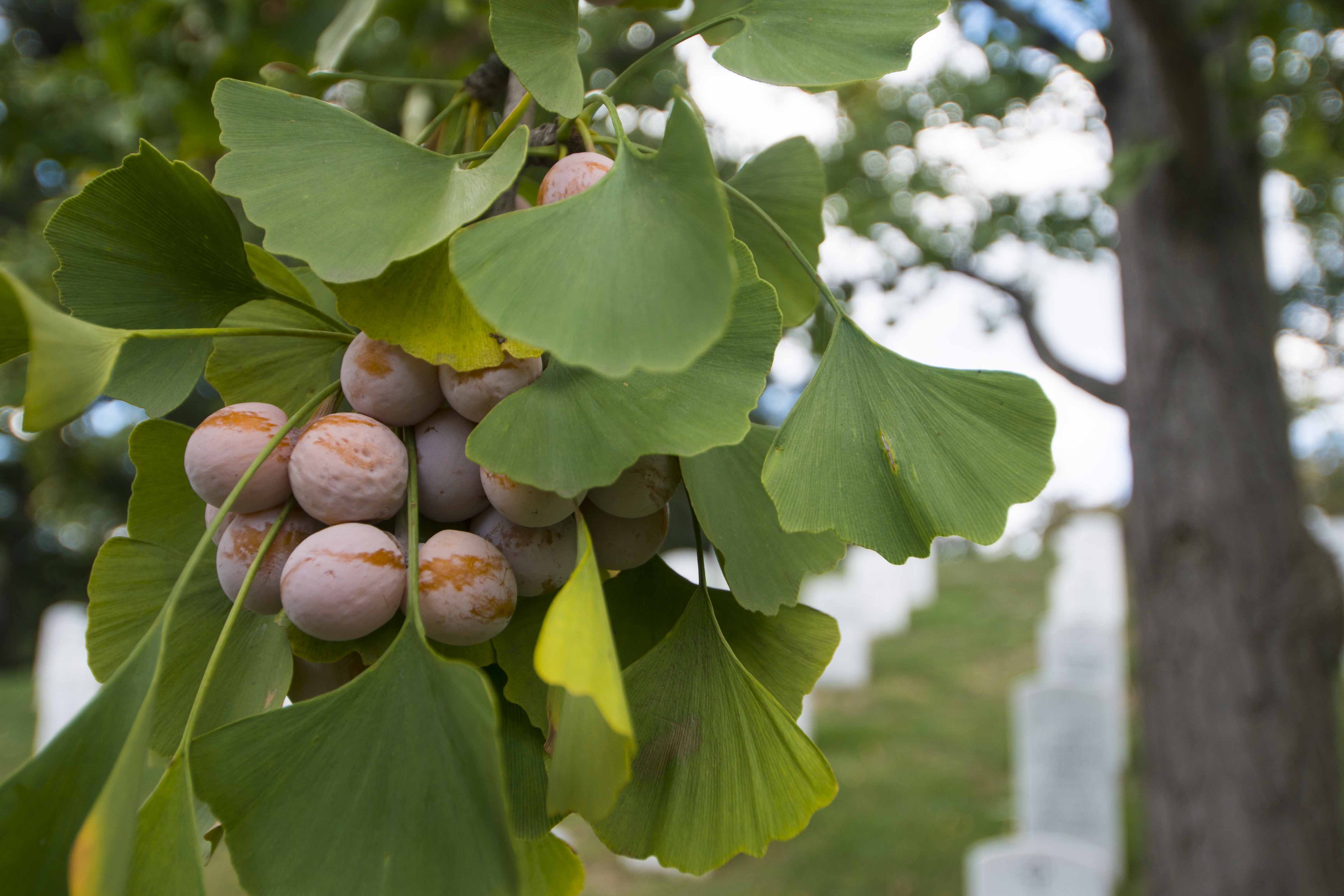 The Ginkgo biloba, or maidenhair tree, is often called a "living fossil." More than 200 million years ago, when dinosaurs roamed North America, Gingko was the dominant tree species. In North America (and elsewhere) the tree eventually went extinct, along with the Stegosaurus. But its popularity as a street or specimen tree has only grown over the years.
The Ginkgo biloba, or maidenhair tree, is often called a "living fossil." More than 200 million years ago, when dinosaurs roamed North America, Gingko was the dominant tree species. In North America (and elsewhere) the tree eventually went extinct, along with the Stegosaurus. But its popularity as a street or specimen tree has only grown over the years.
The Ginkgo's fan-shaped leaves make it one of the most easily recognizable landscape trees. These leathery leaves stay bright green all summer long, until late October when they turn a spectacular yellow. When a freeze hits them, the tree drops most, if not all of its leaves at once, leaving the ground painted in yellow. Homeowners learn quickly how difficult it is to rake up the thick, tough leaves, which are notorious for taking a long time to decompose.
One of the reasons for Ginkgo’s popularity is its incredible pollution tolerance. That’s why you’ll see so many of these trees planted along city streets. They can endure compacted soils, heat and drought, and are disease and insect resistant. According to one leading horticulture authority, they also display good soil salt tolerance.
Mention of the maidenhair tree is not complete without acknowledging its fruit (botanically, its seed). The fleshy covering of the seed, the shape of a plum, turns from green to a pale peach and can be incredibly foul smelling. The trees don’t fruit until they reach 20 to 25 years old. Since the trees are dioecious — male and female flowers are on separate trees — this can be a problem, as you may not know whether you have a male or female tree until it’s too late.
Smelly fruit or not, this resilient, ancient tree is revered in China, Japan and Korea. Planted at some of Asia's most important Buddhist temples, Gingoko also survived the atomic bombings of Hiroshima and Nagasaki during World War II.
Gingko trees are located at several places in Arlington National Cemetery: Marshall Drive, between Sections 64 and 65; Section 33; and Memorial Section K, off Ord & Weitzel Drive. One of the more spectacular specimens can be found at the top of the Custis Walk steps, near the Arlington House.
Photo: Stephen Smith, Arlington National Cemetery.